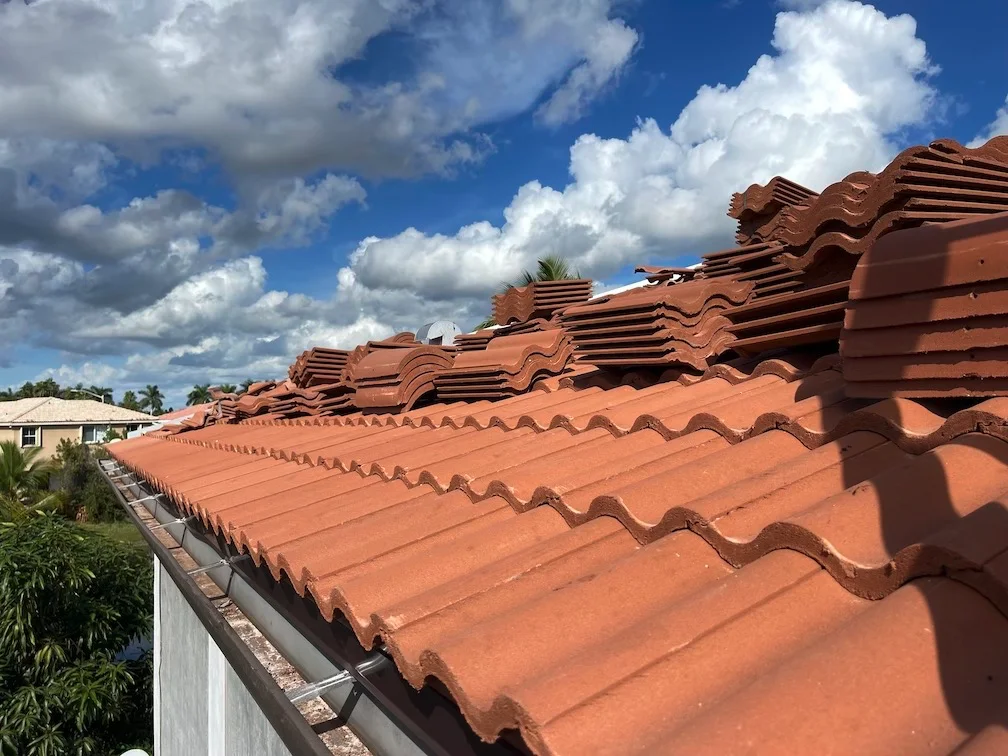Why best tile roofing practices for hurricane preparedness are essential for Florida homes?
Tile roofing is a popular choice for homeowners and businesses in hurricane-prone regions due to its durability and resistance to high winds. However, it’s important to ensure proper tile roofing practices are followed to maximize its performance during a hurricane.
Table of Contents
Here are important tile roofing practices to consider when preparing for a hurricane:
1. Quality materials
The type of roofing material used is crucial in ensuring the durability of a tile roof during a hurricane. It’s important to use high-quality materials that meet or exceed Florida local building codes and manufacturer specifications. A professional roofing contractor can recommend the best roofing materials for your home or business based on the roof type and its attachment to the home walls.

2. Proper installation
Proper tile roofing installation is crucial for ensuring its effectiveness during a hurricane. A skilled and experienced roofing contractor should be hired to install tiles correctly, including the use of appropriate underlayment and flashing. Tiles should also be overlapped correctly to promote water run-off and prevent leaks. At DLJ Roofing we take extra steps to ensure and guarantee you a quality roof that lasts for many years to come.
3. Regular maintenance
Regular maintenance is essential to ensure the longevity and effectiveness of a tile roof. Maintenance practices such as regular cleaning, repairing broken or missing tiles, and replacing damaged underlayment, flashing, and sealants can prevent minor issues from turning into major problems during a hurricane. Important!! DO NOT use pressure washing systems to clean your tile roof. It leads to the removal of the tile coat from the factory which protects it from UV and harsh temperatures, especially in our Florida climate.
4. Wind uplift resistance
Wind uplift resistance is a crucial factor to consider when choosing roofing materials for hurricane-prone areas. The tiles should be securely fastened to the roof using approved fastening techniques to prevent wind uplift or tear during high winds. Contact DLJ Roofing for more information on tile roofing systems.
5. Proper sheathing and underlayment
The roof underlayment provides a stable base for the roof tiles and helps prevent wind uplift or tear during a hurricane. It’s important to choose the correct roof sheathing with the right thickness and material, and ensure it is installed properly.
6. Hurricane straps
Hurricane straps or tie-downs are metal connectors that attach the roof to the walls and foundation of a building. Florida building code for high wind velocity requires a minimum three nails for each strap side. Straps provide additional resistance to wind uplift and ensure that the tile roof remains securely attached to the building during a hurricane. Ask your roofing contractor about tile roofing practices for hurricane and about replacing or reinforcing your straps before installing a new tile roof. DLJ Roofing presents every customer with a roof strap engineering report.
7. Consider reinforcements
For buildings in high-wind areas or that have experienced significant damage during previous hurricanes, additional reinforcements may be necessary to ensure the stability and durability of a tile roof. A professional roofing contractor can assess the building and recommend additional reinforcements such as metal framing or hurricane clips.
At DLJ Roofing Contractors we provide quality expertise for best tile roofing practices for hurricanes. Contact us for a free estimate!






